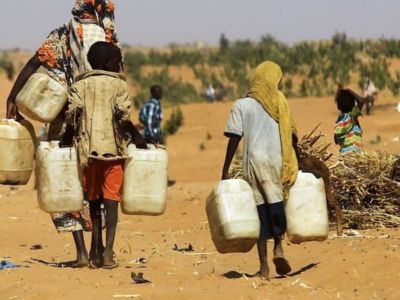In an earlier Article we highlighted adaptation as one of the approaches to managing climate risk. Climate risk adaptation is taking action to prepare for and adjust to both current and expected impact of climate change. It is a process by which we adjust to actual or projected climate and it’s effects, in order to moderate harm or exploit opportunities.
We have been introduced to how the concepts of climate hazard, exposure and vulnerability interface to determine of climate risk. If a human system or ecosystem is not vulnerable then there is no risk. A system that is less resilient or lacks adequate capacity to bounce back is a vulnerable system that qualifies for adaptation interventions.
Before taking adaptive measures the standard approach to problem solving need to be recognized. This involves learning about the climate risk to understand the actual problem; prescribing solution[s]; and monitoring the intervention[s]. We refer to standardized approach as adaptation process or vulnerability assessment. The assessment flows as follows: identification of systems at risk in the sectors like agriculture, health or education; identification of climate hazard[s] affecting the system like floods, droughts, extreme heat or storms; definition of exposure indicators of the assets within the sectors like farms, health or education infrastructure; definition of vulnerability indicators showing how sensitive the exposed assets are to the hazard[s] and whether there are protection mechanisms in place; and Listing adaptation options based on the vulnerability assessment.
The United Nations Framework Convention on Climate Change, an international body responsible for combating dangerous human interference with the climate system, has prescribed three risk levels that are vital in determining specific adaptation measures. The first one is planned adaptation for deliberate policy decisions based on awareness that climate conditions have changed or are about to change hence needing action. Secondly, is contingency adaptation where there is potential to increase adaptive capacity enabling more rapid and efficient response to climate risk. Thirdly, is loss acceptance and coping to develop an accommodative mentality in a situation where it is difficult to avoid the hazard. Let’s examine how these risk levels help define specific adaptation measures with a focus on the agriculture sector:
Planned Adaptation: This is ideal when the climate risk occurs quite often and with low impact losses. The hazards here may manifest like variability in seasonal rains, changing temperatures or frequent floods. Adaptation measures may include rain water harvesting, planting different varieties of short maturing crops with broader environmental tolerance, planting dry-condition tolerant fodder for animals, early sowing with irrigation, practicing integrated farming covering livestock, aquaculture and crops for better resilience, use of plant cover together with main crops to increase soil organic matter and improve water retention.
Contingency Adaptation: This is ideal when climate risk is not so frequent and with medium impact losses. The hazards may manifest as failure of a whole rain season, occasional droughts, heavy storms, or hail-stones over a wide area. Adaptation measure may include growing flood resistant crops like Rice varieties capable of surviving submersion or migration to upland Rice, water conservation measure during droughts, improved drainage, and use of insurance pooling mechanism like the state premiums under the African Risk Capacity [ARC]. The ARC is a specialized agency of the African Union to help governments improve their capacities to better plan and respond to extreme weather events. Uganda is not yet a member. Risk pooling makes unpredictable individual risks become predictable and distributed among all members of the pool.
Loss Acceptance and Coping: This is ideal when climate risk is very rare while the impact of loss is very heavy. The hazards may manifest as prolonged droughts sometimes crossing years, large scale landslides, unprecedented Cyclones of Typhoons, torrential rains leading to massive flooding like it happened in Uganda in 1962- 1964 and 2019- 2020. It is difficult to plan for this kind of risk level. The adaptation measure is normally relief support coupled with government incentives for behavioral change for people to stay away from risk prone zones.
An understanding of these risk levels is vital in focusing on the appropriate adaptation measures. Inappropriate measures will waste resources and yield undesirable outcome[s].

